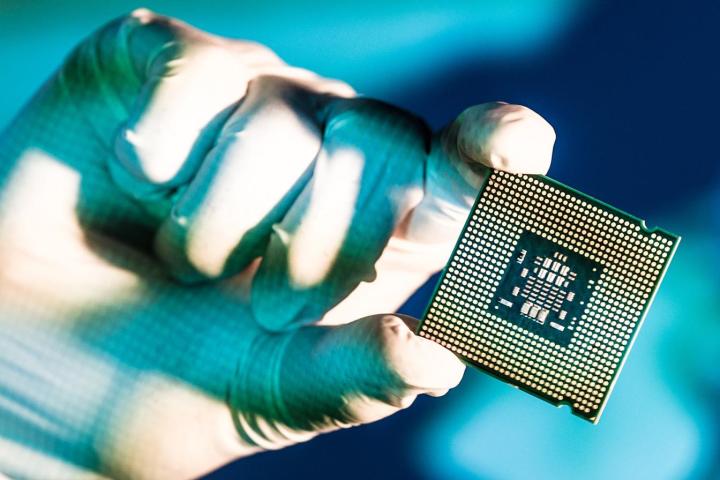
As chips have become increasingly powerful and faster, however, manufacturers have struggled to keep up the pace. Analysts have questioned how much longer Moore’s Law can go, on but one analyst suggests that Intel will adapt by trying new techniques, such as a technology called a quantum well.
David Kanter, writing for his own site, Real World Tech, predicts that Intel will develop 10nm Quantum Well Field Transistors (QWFET) instead of the FinFET transistors currently used. The technology is difficult to understand or explain without a PhD in physics, but here’s the basics.
A quantum well occurs when trapped electrons take on a quantum state, which causes them to only exist at discrete energy levels. This is useful, since it allows greater control over the electron’s behavior. The QWFET uses this quantum well effect, and is also built in three dimensions, so it retains the favorable characteristics of three dimensional FinFET transistors.
QWFETs look set to be scaled down to 0.5V. That will outperform a standard FinFETs, which by comparison can be scaled down to 0.7V. If accomplished, this would lead to transistors that require less power to achieve a particular level of performance. That helps Intel chase Moore’s Law, as it means more transistors can be packed into a certain power envelope. Combined with a reduction in production process to 10nm, QWFETs should provide a sharp increase in efficiency.
Kanter goes on to predict that Intel will begin producing these 10nm QWFETs later this year or in early 2016. If for some reason the technology can’t be ramped up in time for the 10nm chips, they’ll be delayed and used as 7nm transistors in 2017 or 2018. He has been tracking the research of Intel for years, noting that the company has been researching quantum wells for over a decade and also points out a paper by Intel researchers writing about QWFETs back in 2010.
“Once Intel’s researchers showed that it was possible to create FinFET QWFETs,” writes Kanter, “it became clear to me that this technology was headed out of research, into development, and ultimately into processors that would be on the market.”
Kanter says he first made these predictions privately back in 2012 to friends but has now decided to go public. He provides a detailed prediction on what he believes Intel’s process will be, even forecasting what materials will be used to be combined with silicon.
He anticipates that Intel will use InGaAs (Indium Gallium Arsenide) or InSb (indium tin) for the n-type channel and strained germanium for the p-type channel.
Intel hasn’t commented on any of Kanter’s remarks. Other industry heavyweights like Samsung and Taiwan Semiconductor Manufacturing Company (TSMC) have stayed relatively quiet on their own research into new materials. In any case, Intel would be well ahead of the competition, as usual. Most other chip foundries are just now starting to use the FinFET design Intel put into production several years ago.
The supposed slowing down of Moore’s Law has caused the industry to look at new methods and materials, such as Gallium Natride (GaN), which was exhibited earlier this year by Efficient Power Conversion.
Kanter is also keen to point out that this is all “informed speculation” on his part and concedes that he may be wrong too and it will be some time before we find out. “In reality, it will take months or years for Intel and the rest of the industry to reveal their plans for 10nm and 7nm,” he writes.
QWFETs may help notebook battery life continue its improvement, making all day endurance the rule.
If he’s correct, though, the impact could be dramatic. Intel’s transition to FinFETs in 2012 was followed by a rapid reduction in average power draw and, therefor, improvement in notebook battery life. In our testing, we discovered notebook endurance has improved by two and a half hours on average over the last three years. QWFETs should allow a continuation of this rapid improvement, making all day battery life the rule rather than the exception.


